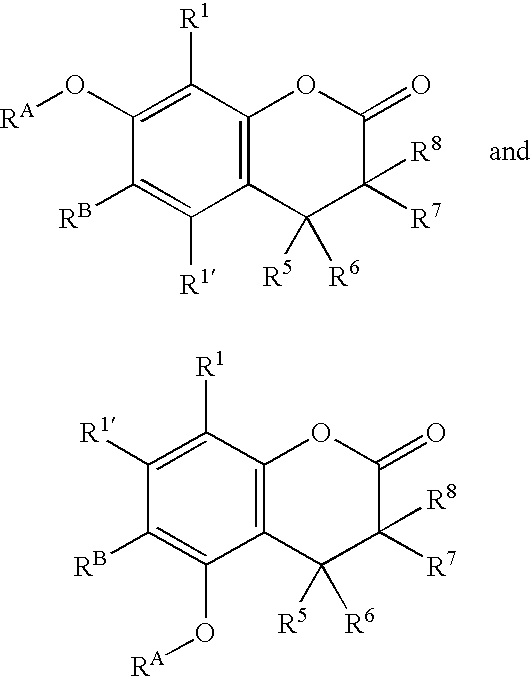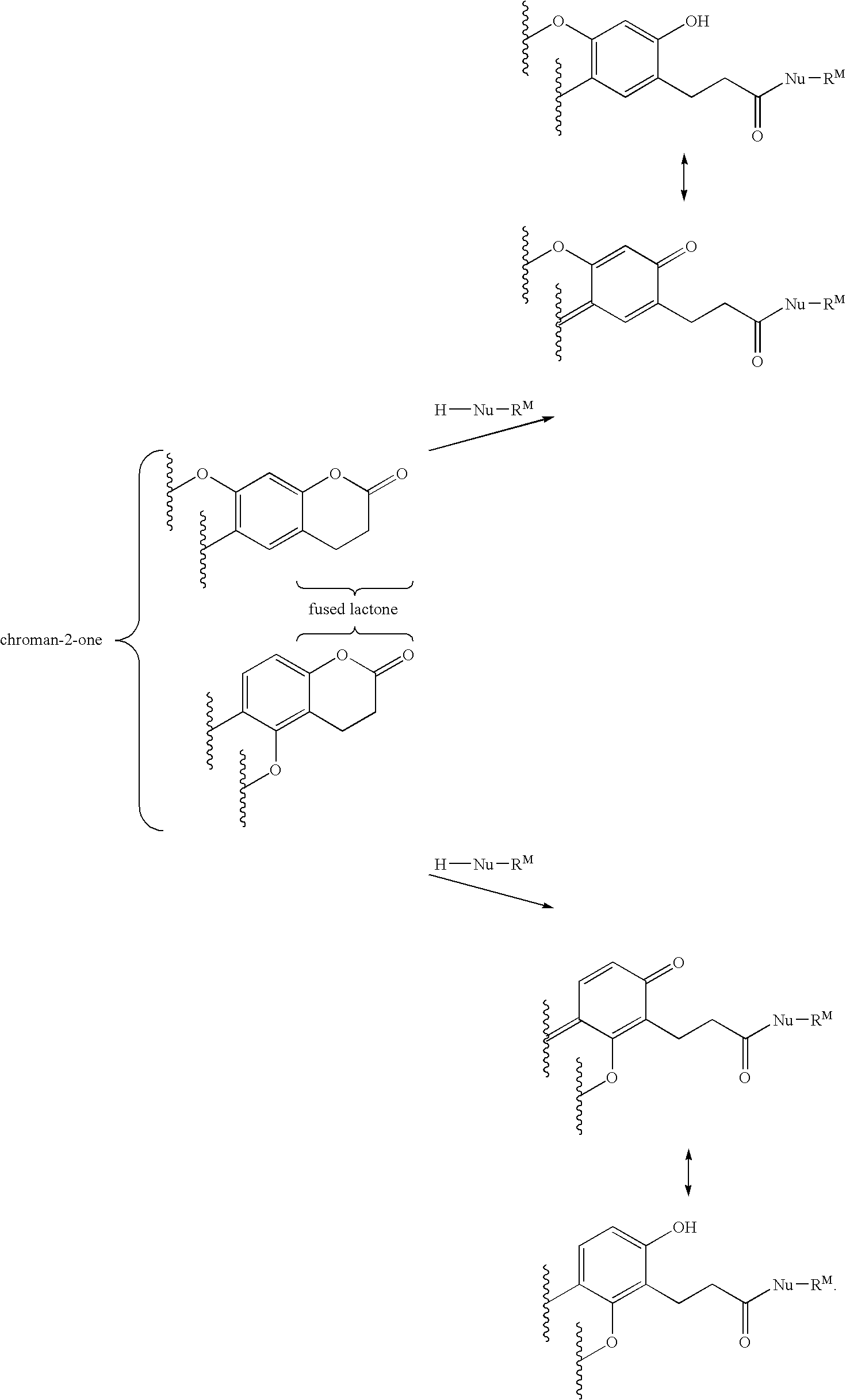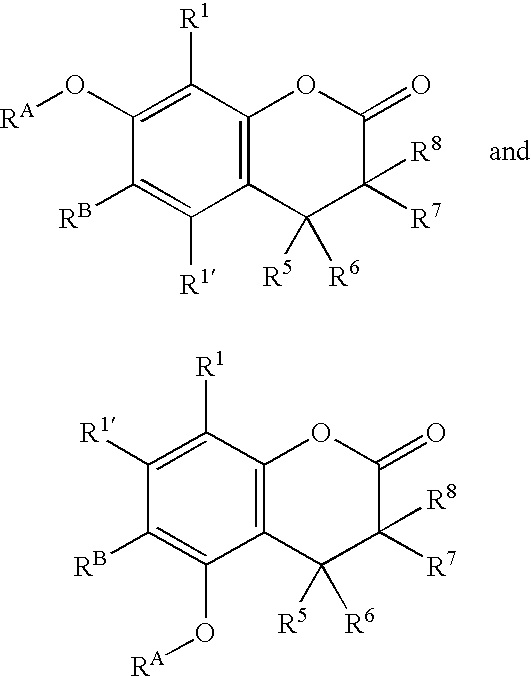Compounds and methods for fluorescent labeling
a technology of compound and fluorescent labeling, applied in the direction of biological testing, group 5/15 element organic compounds, peptides, etc., can solve the problems of severe constraints imposed by multiple detection and dye label selection, and achieve the effect of long shelf li
- Summary
- Abstract
- Description
- Claims
- Application Information
AI Technical Summary
Benefits of technology
Problems solved by technology
Method used
Image
Examples
example 1
[0150] 3-Chloro-2,4-dimethoxybenzaldehyde (2a) was prepared from 1,3-dimethoxybenzene (1a) according to Plattner, J. J. et al. J. Med. Chem. 1984, 27(8), 1016-1026.
[0151] 3-(3-Chloro-2,4-dimethoxyphenyl)acrylic acid (3a). A solution of compound (2a) (11.07 g, 55.2 mmol), malonic acid (8.639 g, 83 mmol) and piperidine (2 ml, 1.722 g, 20.2 mmol) in 80 ml of anhydrous pyridine was refluxed (bath temperature 110° C.) for 2 h. Reaction mixture was cooled, concentrated under vacuum and acidified 250 ml of 5% aqueous citric acid to a pH of 3. Resulted heterogeneous mixture was sonicated for a few minutes. The precipitated material was filtered off, washed with water (2×20 ml) and dried in vacuum over KOH to give 12.7 g (52.3 mmol, 95% yield) of pure (HPLC, 1H NMR) desired acid 3a as a white solid. 1H NMR (DMSO-d6): δ 7.77 (d, J=9.0 Hz, 1H), 7.67 (d, J=16.0 Hz, 1H), 7.01 (d, J=9.0 Hz, 1H), 6.51 (d, J=16.0 Hz, 1H), 3.90 (s, 3H), 3.77 (s, 3H).
[0152] 3-(3-Chloro-2,4-dimethoxyphenyl)propionic...
PUM
| Property | Measurement | Unit |
|---|---|---|
| emission wavelength | aaaaa | aaaaa |
| emission wavelength | aaaaa | aaaaa |
| temperatures | aaaaa | aaaaa |
Abstract
Description
Claims
Application Information
 Login to View More
Login to View More - R&D Engineer
- R&D Manager
- IP Professional
- Industry Leading Data Capabilities
- Powerful AI technology
- Patent DNA Extraction
Browse by: Latest US Patents, China's latest patents, Technical Efficacy Thesaurus, Application Domain, Technology Topic, Popular Technical Reports.
© 2024 PatSnap. All rights reserved.Legal|Privacy policy|Modern Slavery Act Transparency Statement|Sitemap|About US| Contact US: help@patsnap.com










